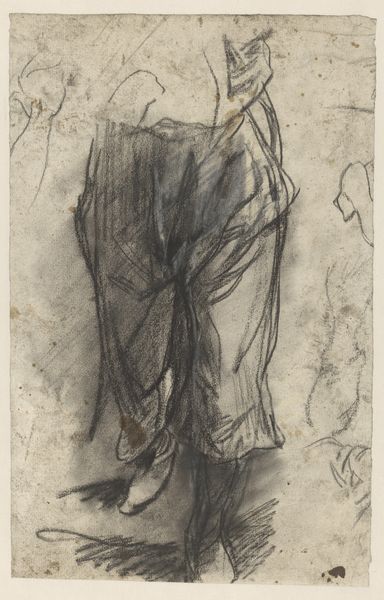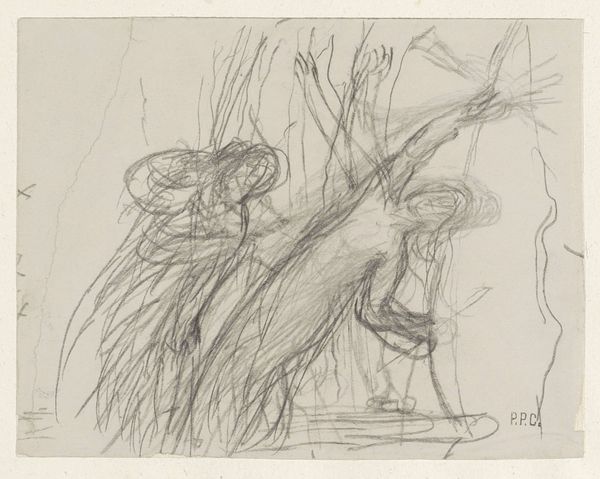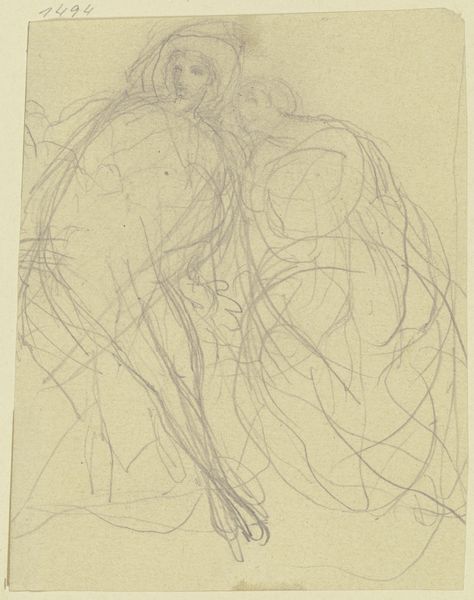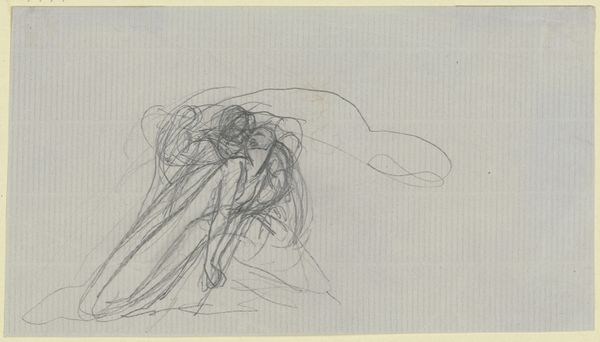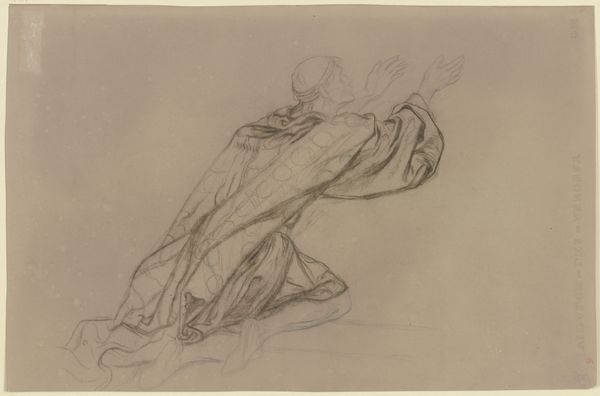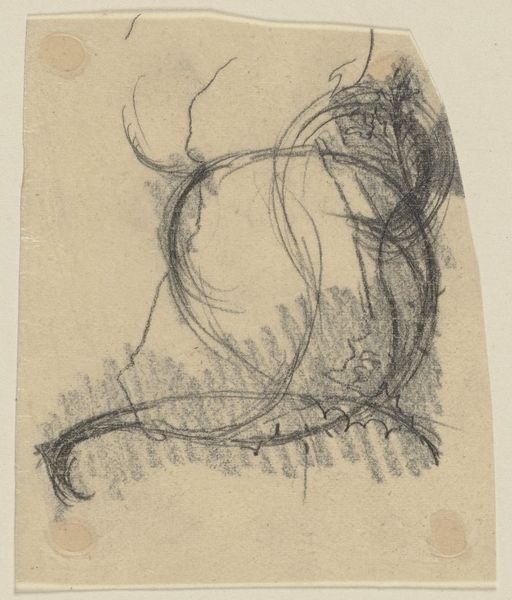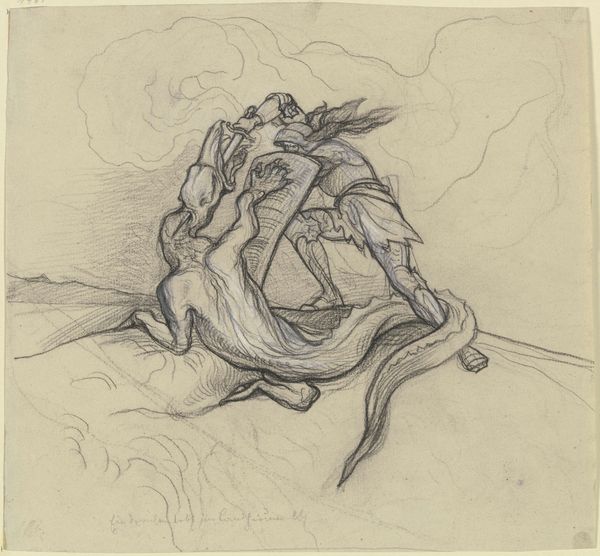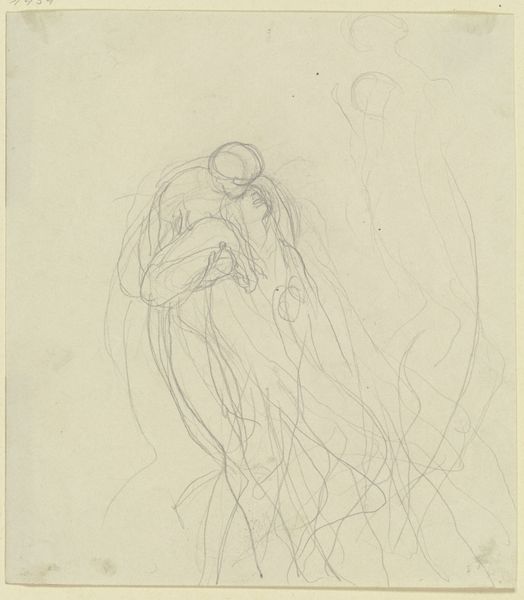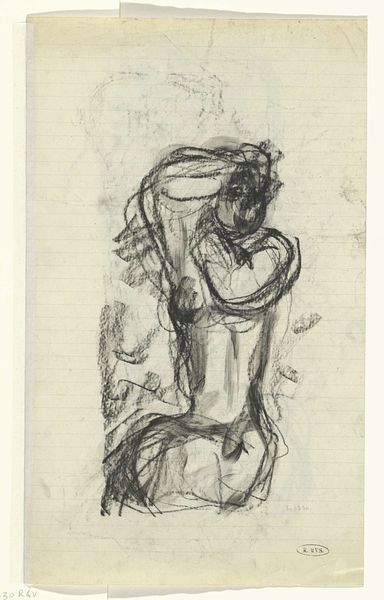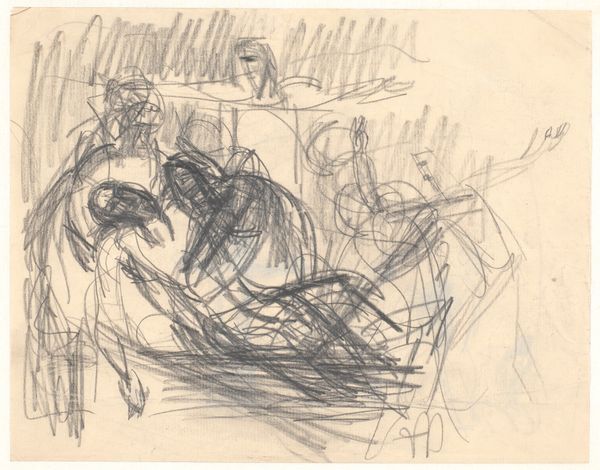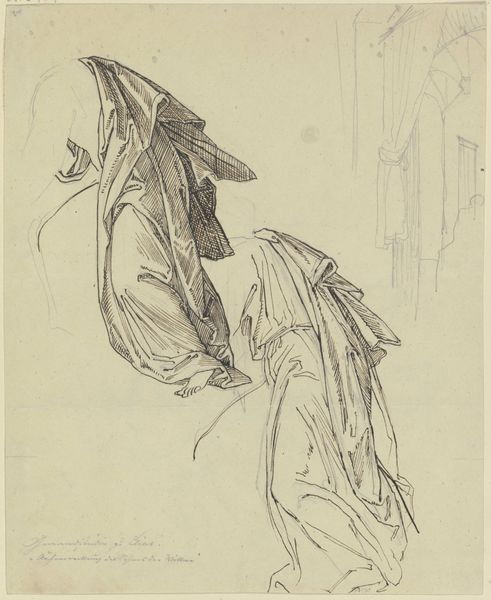
drawing, graphite
#
drawing
#
figuration
#
graphite
#
academic-art
Dimensions: 208 mm (height) x 175 mm (width) (bladmaal)
Curator: Here we have a graphite drawing by Oluf Hartmann, "Sketch for Daedalus and Icarus," which dates from between 1879 and 1910. What are your initial impressions? Editor: It feels very gestural and raw, even unfinished. The frenetic lines create a sense of movement and anxiety; the figures are suggested rather than defined. Is that intentional, to reflect their tragic fate? Curator: Absolutely. This sketch can be read through the lens of exile and the hubris that leads to destruction, which deeply resonate through sociopolitical interpretations. We are witnessing a story of displacement and a cautionary tale about exceeding one's limitations within a strict hierarchy. Editor: The composition also enhances that reading. Note how Daedalus, although taller, is partially obscured by lines that seem to trap him, while Icarus is lower, weighted down, foreshadowing his fall. Curator: Hartmann, situated within an era grappling with evolving social norms, uses the classical myth to engage with concepts of freedom versus control and the dangers inherent in defying established order. I see echoes of societal restrictions, the longing for liberation, and the heavy consequences of societal transgressions. Editor: Looking at the materiality of the piece, I'm struck by how Hartmann uses graphite to create depth with just tonal variation. It’s a study in light and shadow, yet also quite stark. There are no blended gradients, only distinct strokes that form complex masses. Curator: Those contrasts in tone, in the way he models the figures—they point towards societal binaries present at the time, such as liberty versus restriction. It prompts us to question the invisible restraints society places upon individuals and what propels humans to push boundaries, sometimes leading to their undoing. Editor: A fascinating interplay between a classical myth rendered with modernist techniques. Curator: Precisely, offering insight into humanity's perpetual negotiation between aspiration and consequence. Editor: Hartmann definitely gives us plenty to consider from both aesthetic and conceptual angles.
Comments
No comments
Be the first to comment and join the conversation on the ultimate creative platform.
